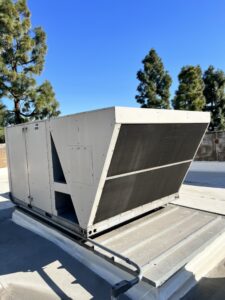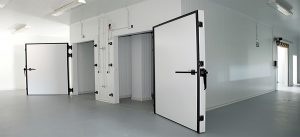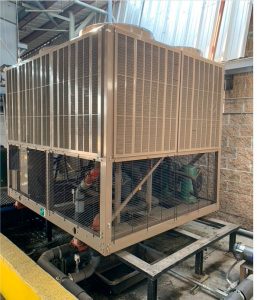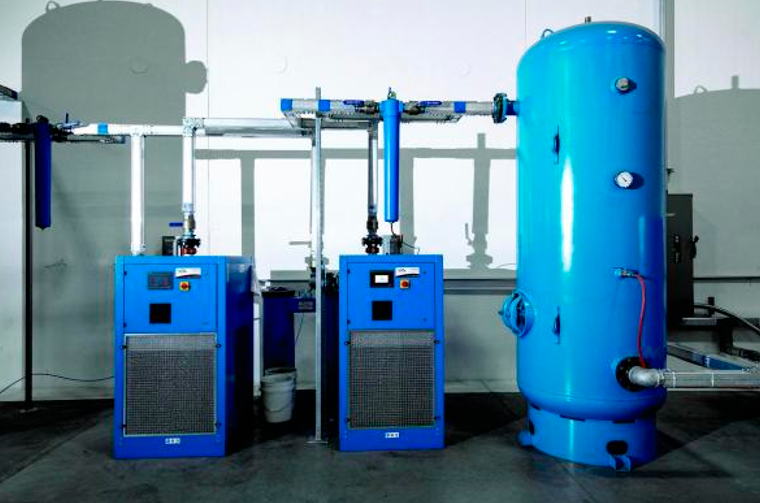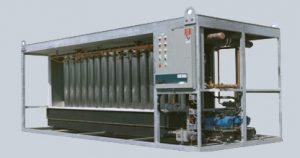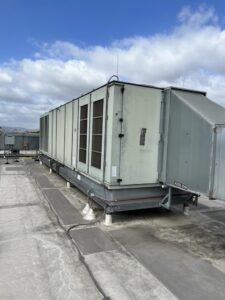Cooling Tower Maintenance: “Preserving Efficiency and Longevity”
Cooling tower is one of the crucial devices of the HVAC system, mainly required in the industrial sites where heat management becomes necessary for operation. These towers are highly essential to industrial processes not only in cooling but to higher condenser water temperatures and to temperature control of air conditioning equipment. Nonetheless, the managing of cooling towers effectiveness requires regular maintenance activities. Through this blog, we will examine the significance of the cooling tower maintenance as well as the various types of cooling towers alongside their fundamental components that can be utilized to improve the performance.
Unexpected breakdown? Call our emergency line for immediate cooling tower repair and peace of mind.
The Role of Cooling Towers in HVAC Systems
Cooling towers are crucial hardware components in the HVAC units, as they are involved in the heat rejection process. In short they also greatly contribute in cooling down the condenser water which is afterward used for multiple purposes in air conditioning, process cooling, and Refrigeration systems. The condenser water heat meant to be removed by cooling towers is necessary for the systems efficiency.

Importance of Cooling Towers in Industrial Settings
Cooling towers become a major factor when it comes to the industry because there is high heat releases associated with industrial processes. These towers minimize the amount of water necessary for this use, thus provide a cooling process for different industrial operations. Industries exploit cooling towers among others for the effective functioning of heat exchangers, transferring and getting rid of heat from these systems. Another reason for use of cooling towers is the fact that conserving water is promoted for industrial processes making the whole process more favorable to the environment.
Industries are massively relying on air-cooling devices called cooling towers to get rid of the thermal energy discharged during production operations. These towers are the fundamental and main part of a process of ensuring top quality performance and safety of the equipment from overheating. Here are some industries that commonly use cooling towers:
Power Plants: Fossil fuel power facilities (coal, oil, gas), Nuclear power plants, and Solar powered power plants involving geothermal energy.
Chemical Processing Plants: Petroleum refineries, chemistry manufacturing plants, etc.
Manufacturing and Industrial Processes: steel, metal casting, plastics, glass, and cement.
Oil and Gas Industry: The production of oil refineries and Gas processing plants.
HVAC Systems: You can choose from commercial, industrial and hospitals sites, Data centers.
Food and Beverage Industry: Breweries, Distilleries and Canning plants among others.
Paper and Pulp Industry: Disintegration of paper mills and Pulp factories.
Textile Industry: Textile industry facility plants.
Automotive Industry: Automobile production plants.
Pharmaceutical Industry: Pharmaceutical operations.
Mining Industry: The mining industry, including those in mineral processing.
Aerospace Industry: Aviation manufacturing factories.
Plating and Surface Finishing: The task of the metallizing plants.
Data Centers: Chiller/Cooling towers are common in data centers to remediate heat from the IT equipment.
The companies operating in these sectors rely on cooling towers not only to dissipate the hot water but also to ensure the effectiveness of the industrial line together with the safety and sustainability of the industrial machines and accessories. The specific cooling tower and its design can often be strongly influenced by the unique environment that each industrial plant has to operate, as requirements and constraints differ from plant to plant.
Cooling Towers and Their Role in HVAC Systems
Think of cooling towers as the backbone of your HVAC system. They’re like the guardians of temperature control, ensuring that the water in the condenser stays just right to keep everything running smoothly. Picture this: when your HVAC system heats up, these towers swoop in to cool down the water. Then, they send that refreshed water back to keep the system running smoothly. This whole process is like the secret ingredient that keeps your HVAC system in top shape, ensuring it uses energy wisely and lasts longer.
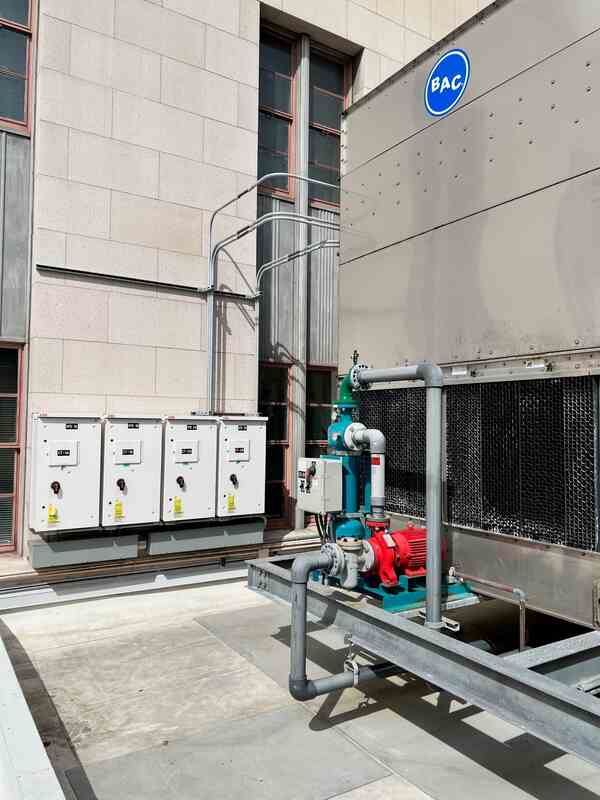
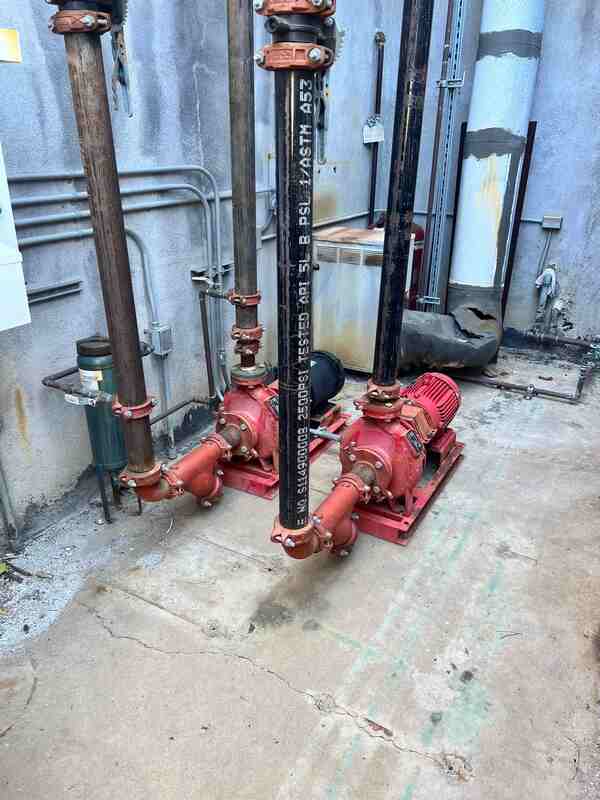
Different Types of Cooling Towers
Natural Draft and Mechanical Draft Cooling Systems
Natural draft towers have a larger footprint than mechanical draft towers, which are more compact. Which one you will use depends on the amount of heat rejection your application requires. Natural draft cooling towers employ the warm air rising to cool the water and rely on the buoyancy of the air to draw the cold air through the tower. On the contrary, the mechanical draft system depends on fans and blowers to supplement the cooling process by blowing air through the tower. Both of them are processes of heat exchange eventually making the water appropriate for industrial use.
Crossflow and Counterflow Cooling Systems
The cooling towers can be grouped into two broad classifications – crossflow and counterflow systems. Crossflow cooling towers are open-air in the sense where water moves vertically as air is blown across the fill material horizontally. This layout accomplishes that by increasing the interaction between air and water for best cooling performance. Different to this, counter flow cooling systems have air flow flows in the opposite direction to the water flow so that the water moves downwards and air flows upward. In contrast to the rest, the counterflow towers have enhanced efficiency, but they may also be prone to fouling and scaling. These aspects have to be taken into account when selecting the right design – efficiency and corrosion resistance being among the most important ones, as well as airflow distribution.
Key Components of a Cooling Tower
The cooling tower should possess high efficiency in heat exchange and provide cooling due to the integration of different elements into it. The media filling, drift eliminators, fans, and distribution bays working together increase the heat exchanger’s efficiency. The arrangement of these important gatherings will provide a large surface for water to cool, control the outflow of the water, and circulate the air which will help the cooling process. Routine maintenance of these elements like dredging ponds and sifting eliminators is of the utmost importance to avoid a shutdown and preserve high performance. Through a proper grasp of the significance in each individual parts, the cooling tower would be operating properly with the most heat exchange as well as proper cooling processes.
How Can Regular Cooling Tower Maintenance Improve the Efficiency?
Frequent cooling tower maintenance helps to boost efficiency by ensuring flawless operation and reliability. Now, let’s move on and see the relation between maintenance techniques and the efficiency of cooling towers.
Regularly Monitoring the system’s performance.
Routine observation of the tower cooling system is the key to uncovering the deviations or inefficiencies occurred. Parameters like the water temperature, flow rate, air inlet temperature, heat load, and distribution system efficiency are monitored. This way, the system runs more efficiently. Through the performance of its system monitoring, the maintenance issues can be detected beforehand, so that the intervention can be carried out promptly and the performance of the cooling tower can be improved.
Cleaning and inspecting the cooling tower.
To ensure top performance of the cooling tower system, periodically maintain and clean its components, namely the basin, the fill material and the distribution system. This routine upkeep will avoid the creation of blocked pipes and make heat transfer from the tower more efficient. Further, examining and cleaning exchange surfaces, heaters, and drift eliminator is also useful in increasing the general performance of the system. Through routine inspections and cleaning of these vital tower parts, losses due to system inefficiency and breakdowns can be mitigated. Furthermore, having proper water treatment and effective fan operation are important operations to make it energy efficient and reduce the operating expenses, hence increasing the lifespan and success of cooling tower.
Extending cooling tower life.
Correct maintenance would involve the water treatment, the cleaning and the inspections to prevent early failure of the cooling tower. A constant and purposeful Cooling tower maintenance process, which is aimed to ensure the normal operation of the system and its long-term life results in the waste of time and money on repairs, and replacement of the system. By taking advantage of preventative maintenance measures, the service life of the tower can be extended and the lifetime costs may thus be saved in comparison with earlier times.
Preventing breakdowns and component damage.
Preventive visits give the chance to fix issues on time and upgrade worn or damaged parts. Throughput stable internal inspections and washes of the tower’s internal surface are important and ensure the regular improvement of heat transfer. The constant maintenance keeps the parts like pumps, fans, and filter media in a good condition thus enhancing the element’s lifespan. The system daily maintenance reduces the probability of system shortage avoids the operational interruption. Periodical evaluation and maintenance of the parts occur so that there is a greater possibility of avoiding property damages and machine downtimes. Mechanically, on-time levanting and replacement of outgiven details keep away system damage or hurt. Moreover, water plants play a vital role as they hinder deposition, corrosion, and microbiological growth which in turn enhance the overall well-being of the system.
Increasing system reliability and performance.
Cooling tower maintenance is more than regular maintenance of your industrial processes or HVAC system. It is a strategic investment that adds value to your cooling system. Through being constructive, sticking to a complete maintenance plan and getting professional help when necessary you will be able to ensure that your cooling tower will be in top shape to increase the efficiency of your facilities.
Preventative maintenance of the cooling system boosts the cooling tower operating efficiency and performance. Effective maintenance upsets the reliability by which performance is ensured and cooling demands are met with. Maintaining routine upkeep enables the system to be more efficient, hence a higher performance level is achieved. A system’s component maintenance improves reliability and efficiency. Regular maintenance promotes a smooth performance of the system and leads to lower operating expenses. Scheduled tests and tunings has a very important role in ensuring the system’s stability and peak efficiency.
Quickly identifying the symptoms of the problem with cooling towers will prevent expensive repairs and stoppage of production. Some common symptoms comprise of uncommon noises, decreased performance and physical damages. ICE BEAR INC’s knowledgeable staff does the job which include doing an evaluation on your system to identify possible issues and deal with them effectively, limiting the interruptions of your operations.
Whether you’re upgrading an existing system or installing a new cooling tower, ICE BEAR INC provides comprehensive installation services. Our technicians work closely with clients to design custom solutions that align with their specific needs, ensuring maximum efficiency and longevity from the start.
Why Choose Us for Your Cooling Tower Needs
- Proven Expertise: With years of experience, ICE BEAR INC boasts a team of skilled technicians dedicated to excellence in Cooling Tower and HVAC services.
- Cutting-edge Technology: We leverage the latest diagnostic tools and technology to deliver precise solutions and stay ahead of industry trends.
- 24/7 Support: Our commitment to customer satisfaction extends beyond regular business hours, with round-the-clock support for emergencies.
Investing in the repair, maintenance, and installation of your cooling tower with ICE BEAR INC ensures uninterrupted HVAC Performance, energy efficiency, and cost savings. Trust us to be your reliable partner in sustaining the optimal health of your cooling tower systems. Contact ICE BEAR INC today to experience the pinnacle of HVAC solutions tailored to your unique needs.
Your Cooling Tower deserves the best care.
Trust us to keep your cooling tower in top shape. Act now to prevent downtime and maximize energy savings. Contact us at (866) 423-2327 for a maintenance plan tailored to your needs.


